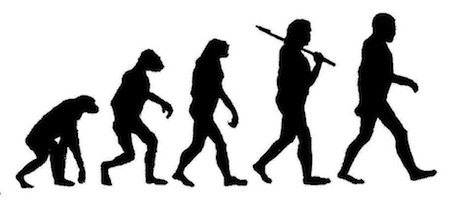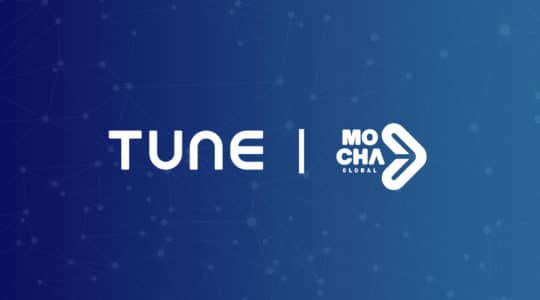
Last month, we presented at the TechStars Seattle Demo Day. I could talk for days on the TechStars experience (and I probably will), but today I just want to talk about how a pitch evolves over time.
Going into TechStars, I thought Demo Day would be a simple culmination of everything else learned over the previous three months. Perhaps it’d take a week or two of prep and practice, but not too much more.
To those on the outside, the TechStars Demo Day must seem like a well-oiled machine. Each pitch is enticing, designed well, and even the intermission entertainment (this year in the form of young magicians) is flawless. Now, after participating in one myself, I can tell you Demo Day only seems that way because of the intense process of tweaking and changing to get each team’s Demo Day pitch ready for the stage.
In reality, prepping for Demo Day happened alongside everything else that was going on during the craziest three months of work you’ll ever have. The pitch evolved just as the company did throughout the accelerator. The first time we practiced our pitch was over two months before Demo Day and less than a month into TechStars.
Follow along in the three videos below to see just how my pitch for MobileDevHQ changed over time.
The beginning: Unrefined skeleton
In case you’re wondering what the heck I’m doing in the beginning of the video: pitching is all about confidence and enthusiasm. I’m not a natural public speaker by any means, and when nervous, I come off flat and monotone. It’s also more my personal style to be a little subdued and understated when speaking. But presenting your company to a room of 700+ investors is not the time to be subdued and understated. It’s the time to show just how passionate you are about the opportunity and the business you’re building. It’s the time to bleed your company’s colors.
Thus, to start, I would get my blood boiling by cranking out a few burpees. They provide just enough spark to my step to get me comfortable with what I am doing. You’ll see the tail end of my last burpee in the video.
You’ll notice I really don’t know what the heck I’m supposed to be saying. I look at the screen often, the slides often don’t have the right content, the design is awful, the demo is static, and so on. It was a decent skeleton to start, but certainly wouldn’t place us high in the hearts and minds of hundreds of investors. Building an amazing pitch takes time and practice, and I hadn’t spent any time or practiced at all yet. It showed.
The middle: Refined, yet ugly
A month later, I gave an iterated version of the pitch:
We try much harder here to follow the “Tell ‘em what you’re going to tell ‘em; tell ‘em, tell ‘em what you told ‘em” philosophy of presentations, something Andy Sack and Kayla Roark believe in wholeheartedly. Next, you’ll notice that we now lead with power. Specifically, it’s all about our traction and being in the lead in the app store SEO space. We talk about our current revenue as well as our current customers. Our traction is what set us apart from many of our peers in TechStars, so it made sense for us to lead with this fact. To this audience, and amongst nine other amazing companies, traction was our differentiator, so we used it to hook the audience as quickly as possible.
The ending of the pitch is also getting tighter and more to the point. The “ask” becomes stronger and pulls the presentation together from start to finish. You better nail your ask, or there’s really no reason to present at all.
So, how did it turn out on stage?
The result
Over two months after the first pitch practice, we finally gave our presentation in front of hundreds of investors and community members. Here’s the final product:
The start of the presentation is now how it should be: powerful, clear, and refined. From the beginning of the presentation, the audience knows that there’s a problem, we’ve fixed it, and we’ll continue to grow that success. If someone walked out of my pitch right there – before I’d even started the slides of the presentation – they would have the full framework of what I was there to say.
We also removed the customers slide from the beginning and placed it at the end. This allowed us to bookend the entire presentation with our traction. We start with our revenue and finish with our stellar customer list. Now we start strong and end strong, the two most important pieces of the puzzle.
I’m consistently impressed by just how much design matters in a all aspects of presenting, so we chose to hire a designer to reshape the look and feel of our deck. Remember: investors are humans, too. They like good looking things. They are attracted to shiny objects just like anyone else, so having a design that’s more appealing helps make us more appealing in the process.
The finished product is quite a bit different than the first two practice pitches. It’s a process of refining and sharpening, but I think in the end we really conveyed our message and our opportunity.
What do you think?
Overall, our Demo Day presentation went really well. The reception by investors and attendees was great. But that doesn’t mean it was perfect, so where could we have improved? Leave a comment and let us know!
Note: (a) I should probably mention these videos should not be misconstrued as public soliciting of investment, they’re not, and (b) I did blur some things out, for which I apologize, but while creating test versions of the presentations I would often throw random logos or such in of folks who may not have even been a customer or who were customers but haven’t given us permission to use their name. It’d be inappropriate of me to show those logos here.
Author
Becky is the Senior Content Marketing Manager at TUNE. Before TUNE, she handled content strategy and marketing communications at several tech startups in the Bay Area. Becky received her bachelor's degree in English from Wake Forest University. After a decade in San Francisco and Seattle, she has returned home to Charleston, SC, where you can find her strolling through Hampton Park with her pup and enjoying the simple things in life.




Leave a Reply
You must be logged in to post a comment.